That performance caught the attention of the New York Rangers of the NHL, who signed Seibert for the 1931-32 season where he developed under the tutelage of defensive partner and future Hall of Famer Ching Johnson. During his career, Seibert, known for his rugged physical play and leadership, would rarely miss a game, and over the next four seasons with the Rangers he played a 185 out a possible 192 games, which included every game of the 1933-34 and 1934-35 seasons.
During Seibert's first season in New York, the Rangers won the American Division and defeated the Montreal Canadiens to advance to the Stanley Cup Finals eventual champion Toronto Maple Leafs. That experience served him well as the Rangers finished third in the American Division in 1932-33, which necessitated a longer playoff route. In the Quarterfinals, they again defeated Montreal, this time 8 goals to 5 in a two-game, total goals series. They then dropped the Detroit Red Wings 6 goals to 3 to advance to face the Maple Leafs in a rematch of the 1932 finals. This time the Rangers prevailed, winning the best-of-five series 3 games to 1 to capture the Stanley Cup in only Seibert's second season.
After scoring just 10 and 5 points his first two seasons, Seibert cut loose the next two seasons, first scoring 13 goals and 23 points in 48 games in 1933-34 and then 25 points in 1934-35, solidifying his reputation as a great puck mover as well as a good shot blocker.
Seibert, known for his tough contract negotiating had worn out his welcome with New York management, and after 17 games of the 1935-36 season, was traded to the Chicago Black Hawks for fellow All-Star defenseman Art Coulter, who had clashed with Chicago management.
After joining Chicago in 1936, the Black Hawks would stun the hockey world in 1937-38. They would scrape into the playoffs with by far the worst record of the six qualifying teams out of the eight that made up the NHL with a 14-25-9 record for 37 points, just two more than the Red Wings. They then ousted the Canadiens 2 games to 1 before doing the same to the New York Americans to advance to the finals against Toronto, who had a 24-15-9 record for 57 points. Chicago would win Game 1 by a score of 3-1 with a replacement goaltender, who was ruled ineligible and not allowed to compete in Game 2, which Chicago lost.
Their regular goaltender Mike Karakas returned for Game 3 with a protective steel toe to protect his injured foot and backstopped the Black Hawks to consecutive wins 2-1 and 4-1 to take the best-of-five series 3 games to 1. The lowly Black Hawks win was so unexpected that the NHL didn't even have the Stanley Cup on hand for the two games in Chicago and the team had to celebrate their championship without the cup!
The championship was the second of Seibert's career, which allowed him to join the exclusive club of only four players to have ever won a Stanley Cup with both Chicago and the Rangers, with the others being the man he was traded for, Coulter (Chicago 1934 and New York 1940) and Paul Thompson and Taffy Abel (New York 1928 and Chicago 1934).
In 1940-41 Seibert would be named the captain of the Black Hawks and have his fourth 20 point season with 20 and follow that up with a 21 point season in 1941-42 when he was again the team captain. He would then top 30 for the first time with 32 from 5 goals and 27 assists in 1942-43 and then set a career high with 3 points from 8 goals and 25 assists in 1943-44.
Each year from 1935 through 1944 Seibert was named to either the first (4 times) or second (6) NHL All-Star Team at the conclusion of the season.
He was on pace for another 30 point season the following season of 1944-45 when he had 15 points after 22 games of the 50 game schedule when he was traded to Detroit on January 2, 1945 after the death of team owner Major McLaughlin. Seibert was so popular in Chicago that McLaughlin had given Seibert an ownership stake in the club, but Chicago General Manager Bill Tobin refused to recognize the deal and instead traded Seibert. He ended up with 29 points for the year but added 3 more in the playoffs as the Red Wings defeated Boston in seven games before losing to Toronto in seven games of the finals.
He split the next season between Detroit of the NHL (18 games) and the Indianapolis Capitals of the AHL (24 games). In 1946-47, Seibert played the final 19 games of his career before concentrating on head coachnig, returning to where is career began in Springfield to become head coach of the Indians for five seasons.
Seibert was named to the Hockey Hall of Fame on this date in 1963, joining his father Oliver Seibert to become the first father-son combination of players in the Hall of Fame. Seibert was also named as one of the Top 100 Ranger Greats and The Hockey News Top 100 Greatest Hockey Players.
Today's featured jersey is a 1936-37 Chicago Black Hawks Earl Seibert jersey as worn during his first full season in Chicago. This is a very rare style of Black Hawks jersey, only worn for two seasons. Chicago played their first season of 1926-27 in white jerseys with multiple black stripes. They reversed the colors of the jersey for 1927-28 to black with white stripes for the next seven seasons.
In 1934-35 they created what would be a transition style for one year, keeping their black and white logo and changing to a single, wide white band trimmed in red across the chest with matching sleeve stripes. The jersey evolved into today's featured style in 1935-36, changing to a colored main crest for the first time in team history and changing the white stripes to a cream color.
While it only lasted two seasons, today's featured jersey would be the inspiration for the throwback jerseys the Blackhawks would first wear for the 2009 NHL Winter Classic outdoor game, which would then be worn as their alternate jersey for two seasons beginning in 2009-10.
Bonus jersey: Today's bonus jersey is a 1944-45 Chicago Black Hawks Earl Seibert jersey, worn during Seibert's final season in Chicago. This style replaced today's featured jersey and would remain in use from 1937-38 until 1954-55.
This style would be revived by Chicago for the 1991-92 season when the Original 6 clubs each wore a Turn Back the Clock jersey for the NHL's 75th anniversary season, the first throwback jerseys in NHL history.
Today's video section is a look at the 1932-33 champion New York Rangers, who are interviewed by legendary broadcaster Foster Hewitt.

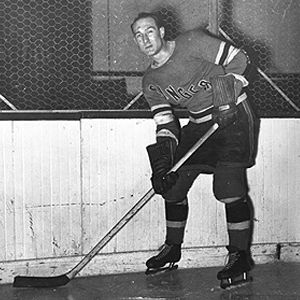
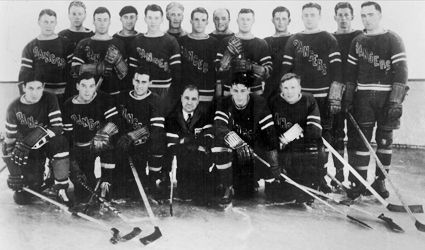
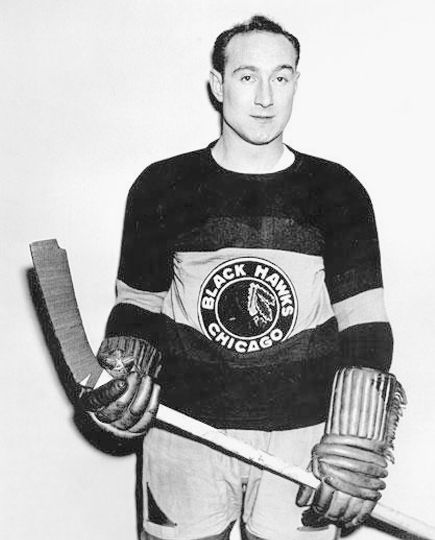
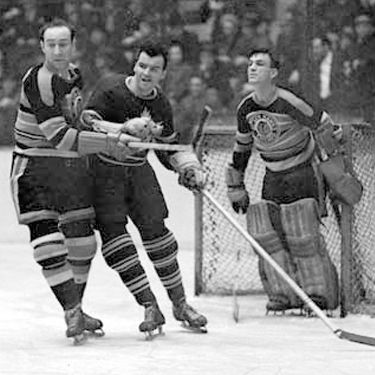
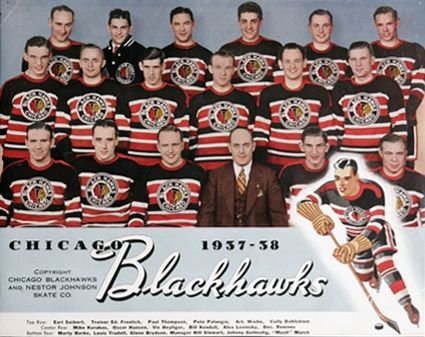
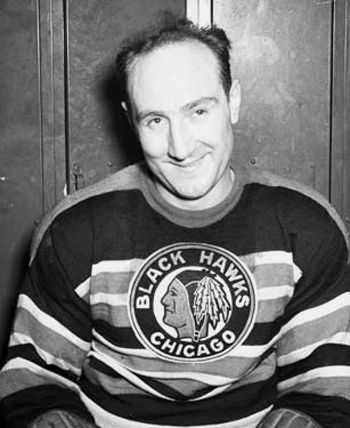
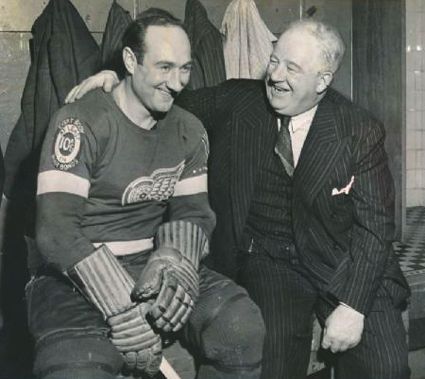
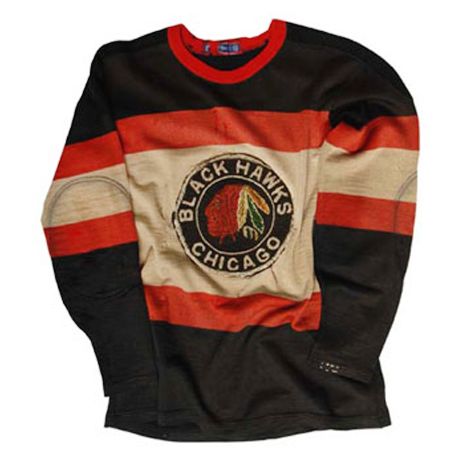
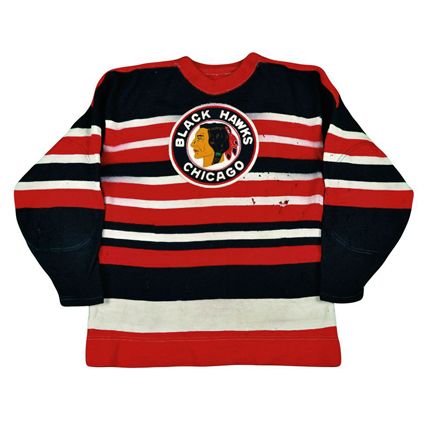
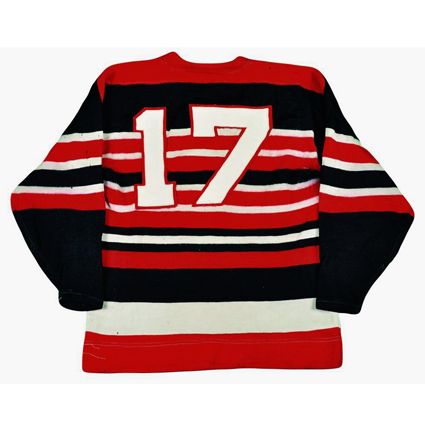










No comments:
Post a Comment
We welcome and encourage genuine comments and corrections from our readers. Please no spam. It will not be approved and never seen.